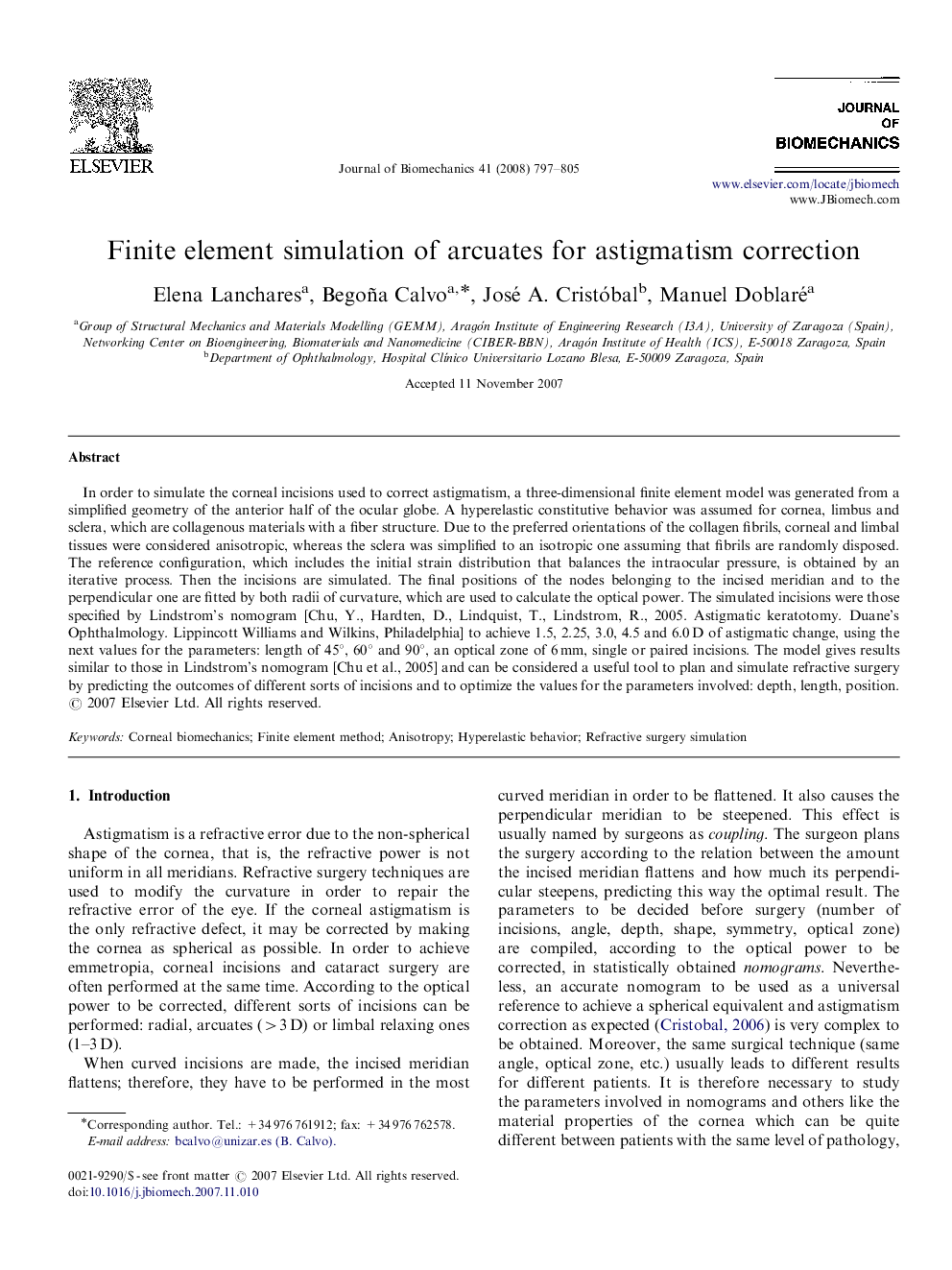| Article ID | Journal | Published Year | Pages | File Type |
|---|---|---|---|---|
| 873017 | Journal of Biomechanics | 2008 | 9 Pages |
In order to simulate the corneal incisions used to correct astigmatism, a three-dimensional finite element model was generated from a simplified geometry of the anterior half of the ocular globe. A hyperelastic constitutive behavior was assumed for cornea, limbus and sclera, which are collagenous materials with a fiber structure. Due to the preferred orientations of the collagen fibrils, corneal and limbal tissues were considered anisotropic, whereas the sclera was simplified to an isotropic one assuming that fibrils are randomly disposed. The reference configuration, which includes the initial strain distribution that balances the intraocular pressure, is obtained by an iterative process. Then the incisions are simulated. The final positions of the nodes belonging to the incised meridian and to the perpendicular one are fitted by both radii of curvature, which are used to calculate the optical power. The simulated incisions were those specified by Lindstrom's nomogram [Chu, Y., Hardten, D., Lindquist, T., Lindstrom, R., 2005. Astigmatic keratotomy. Duane's Ophthalmology. Lippincott Williams and Wilkins, Philadelphia] to achieve 1.5, 2.25, 3.0, 4.5 and 6.0 D of astigmatic change, using the next values for the parameters: length of 45°, 60° and 90°, an optical zone of 6 mm, single or paired incisions. The model gives results similar to those in Lindstrom's nomogram [Chu et al., 2005] and can be considered a useful tool to plan and simulate refractive surgery by predicting the outcomes of different sorts of incisions and to optimize the values for the parameters involved: depth, length, position.
